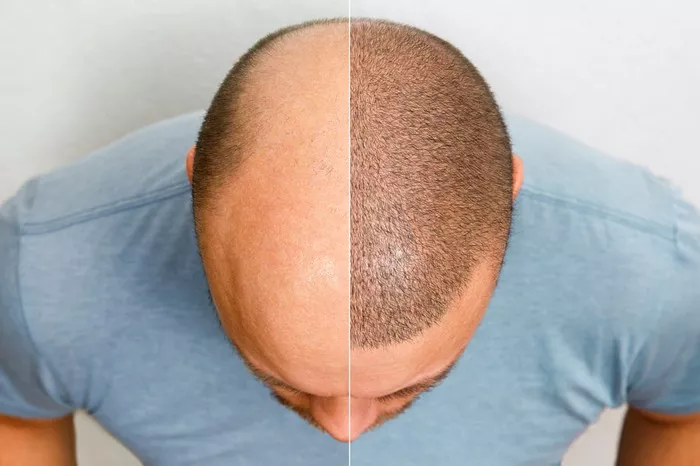Hair transplant techniques have evolved significantly over the years, offering more effective and less invasive options for individuals seeking to restore their hair. Understanding the various techniques available and identifying the best one for your needs can be a daunting task. This article delves into the most popular hair transplant methods, comparing their benefits, drawbacks, and suitability for different hair loss conditions. By the end, you’ll have a clearer understanding of which technique might be the best for you.
Introduction to Hair Transplant Techniques
Hair loss affects millions of people worldwide, leading to a growing interest in hair restoration procedures. The primary goal of a hair transplant is to move hair from areas of dense growth (donor sites) to areas of thinning or baldness (recipient sites). Several techniques have been developed to achieve this, each with its unique approach and advantages.
Key Hair Transplant Techniques
Follicular Unit Transplantation (FUT)
Follicular Unit Transplantation (FUT), also known as the strip method, is one of the oldest and most traditional hair transplant techniques.
How It Works
In FUT, a strip of scalp is removed from the donor area, usually the back of the head. This strip is then divided into smaller units, each containing a few hair follicles. These follicular units are then implanted into the balding areas.
Benefits
Higher Graft Yield: FUT can produce a higher number of grafts in a single session, making it suitable for individuals with significant hair loss.
Cost-Effective: Generally, FUT is less expensive compared to other techniques.
Drawbacks
Scarring: The removal of a strip of scalp leaves a linear scar, which can be noticeable if not covered by hair.
Longer Recovery: The recovery period can be longer and more uncomfortable due to the stitches and larger wound area.
Follicular Unit Extraction (FUE)
Follicular Unit Extraction (FUE) is a more modern and less invasive hair transplant technique.
How It Works
In FUE, individual hair follicles are extracted directly from the donor area using a micro-punch tool. These follicles are then implanted into the recipient area.
Benefits
Minimal Scarring: FUE leaves tiny, almost invisible scars, making it a preferred choice for those who want to keep their hair short.
Quicker Recovery: The smaller wounds heal faster, leading to a quicker recovery period.
Drawbacks
Time-Consuming: The extraction of individual follicles can be time-consuming, potentially requiring multiple sessions for large areas.
Higher Cost: FUE tends to be more expensive due to the meticulous nature of the procedure.
See Also: How Dangerous is Hair Transplant: Things You Need To Know
Direct Hair Implantation (DHI)
Direct Hair Implantation (DHI) is an advanced version of the FUE technique, offering a more precise approach to hair transplantation.
How It Works
DHI uses a specialized tool called the Choi Implanter Pen to extract and implant hair follicles directly. This tool allows for simultaneous extraction and implantation, reducing the time follicles spend outside the body.
Benefits
Higher Survival Rate: The quick implantation process increases the survival rate of transplanted follicles.
No Need for Incisions: The Choi Pen creates a smaller wound, minimizing scarring and speeding up recovery.
Drawbacks
Highly Skilled Procedure: DHI requires highly skilled surgeons, which can limit its availability.
Cost: The procedure is often more expensive than both FUT and FUE.
Robotic Hair Transplant
Robotic hair transplant techniques, such as those using the ARTAS system, incorporate advanced technology to improve precision and efficiency.
How It Works
Robotic systems assist in the extraction and implantation of hair follicles, using algorithms to identify the best donor follicles and implant them accurately.
Benefits
Precision: Robots can enhance the accuracy of follicle extraction and placement, leading to better results.
Reduced Human Error: Automation reduces the likelihood of human error, ensuring a consistent quality of grafts.
Drawbacks
Cost: The advanced technology involved can make robotic transplants significantly more expensive.
Limited Availability: Not all clinics have access to robotic systems, limiting the availability of this technique.
Factors to Consider When Choosing a Hair Transplant Technique
Extent of Hair Loss
The severity and extent of your hair loss play a crucial role in determining the most suitable technique. FUT might be more appropriate for extensive hair loss due to its higher graft yield, while FUE or DHI might be better for smaller areas or individuals preferring minimal scarring.
Budget
Cost is a significant consideration. FUT is generally more cost-effective, while FUE and DHI tend to be pricier due to the time and expertise required. Robotic transplants are usually the most expensive option.
Scarring Concerns
If minimizing visible scarring is a priority, FUE and DHI are preferable. These techniques leave tiny, barely noticeable scars compared to the linear scar from FUT.
Recovery Time
Recovery time varies between techniques. FUE and DHI typically offer faster recovery due to smaller wounds, while FUT might involve a longer healing period.
Surgeon Expertise
The skill and experience of the surgeon are critical factors. Advanced techniques like DHI require highly trained professionals, which might limit your options based on available expertise.
Conclusion
Determining the best hair transplant technique depends on various individual factors, including the extent of hair loss, budget, scarring concerns, and recovery preferences. Here’s a quick recap to help guide your decision:
FUT: Best for extensive hair loss and cost-conscious individuals but involves more noticeable scarring and longer recovery.
FUE: Suitable for those seeking minimal scarring and quicker recovery, albeit at a higher cost and with potentially longer procedure times.
DHI: Offers precision and higher follicle survival rates with minimal scarring and quick recovery but requires skilled surgeons and higher costs.
Robotic Transplant: Provides high precision and consistency but is the most expensive and less widely available.
Ultimately, the best technique is the one that aligns with your specific needs and circumstances. Consulting with a qualified hair transplant specialist can provide personalized recommendations and help you make an informed decision.


